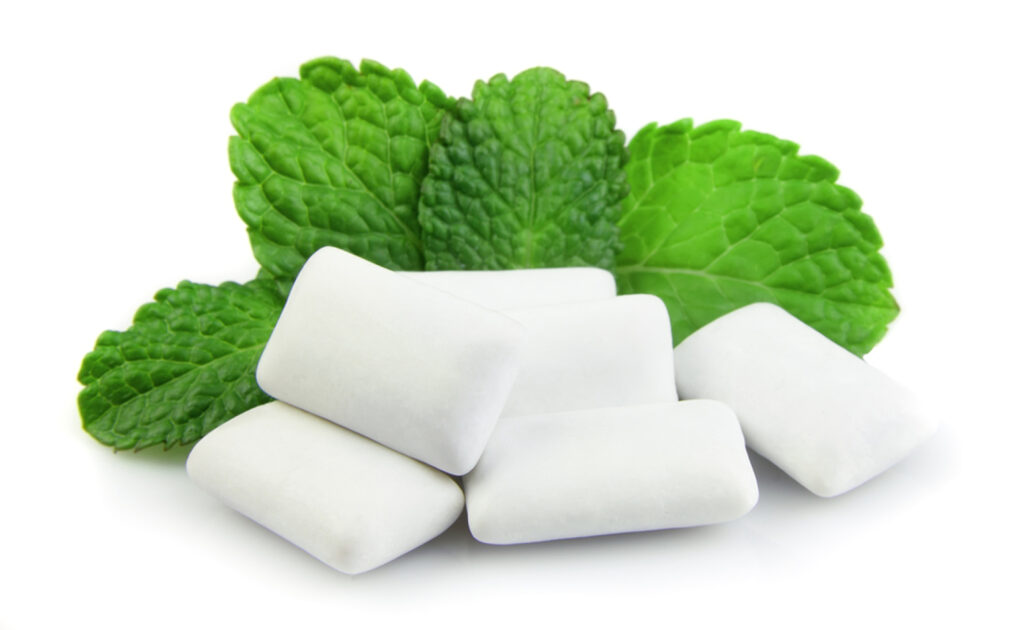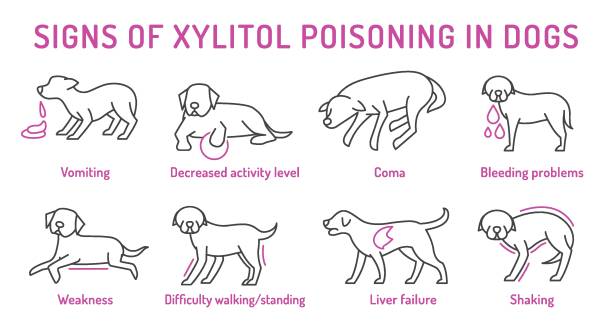
What Is Xylitol?
Xylitol is a naturally occurring chemical compound categorized as a sugar alcohol (or polyol). Chemically, it is a five-carbon sugar alcohol, which makes it different from other common sweeteners like sucrose and glucose. Xylitol is found naturally in small amounts in various fruits and vegetables, such as berries, corn, and mushrooms, and is also present in certain tree bark, like birch. Its structure makes it taste sweet while containing fewer calories than traditional sugar. On average, it provides about 2.4 calories per gram, which is approximately 40% fewer calories than regular sugar.
What Is Xylitol Used For?
Due to its unique properties, xylitol is used widely in various industries, primarily in food and dental products. Its main benefits include its sweet taste without the negative effects of sugar, such as high caloric content or a significant impact on blood sugar levels. Here are some of the primary uses of xylitol:
# 1. Sugar Substitute in Foods and Beverages
Xylitol is popular in sugar-free or low-sugar products because it mimics the sweetness of sugar without contributing as many calories. It does not spike blood sugar levels significantly, making it a better option for individuals looking to manage their blood sugar or reduce overall sugar intake. This property also makes it suitable for people with diabetes or those looking to adopt a lower-sugar diet.
# 2. Dental Health Products
One of the most notable uses of xylitol is in dental health. Xylitol has been shown to reduce the risk of tooth decay by inhibiting the growth of harmful oral bacteria, such as *Streptococcus mutans*, which is responsible for cavities. It promotes saliva production, which helps neutralize acids in the mouth and repairs damaged enamel. For this reason, xylitol is commonly found in sugar-free chewing gum, toothpaste, and mouthwash.
# 3. Pharmaceutical and Medicinal Products
Xylitol is sometimes used in cough syrups and throat lozenges, not only to add sweetness but to improve their texture and taste. It can also be found in nasal sprays where its moisturizing properties help soothe dry nasal passages.
# 4. Baked Goods and Sweets
In the food industry, xylitol is an excellent substitute for sugar in baking and confections. It offers sweetness without the sugar crash and can be used in cookies, cakes, candies, and more. Unlike some artificial sweeteners, xylitol doesn’t have a bitter aftertaste, making it a preferred option for many consumers.
# 5. Personal Care and Beauty Products
Xylitol is sometimes used in lotions, creams, and other skincare products because of its moisturizing properties. It helps draw water into the skin, providing hydration and improving the skin’s texture.
List of Products Containing Xylitol
Xylitol can be found in a wide variety of products across multiple industries. Here is an extensive list of common items where xylitol is often present:
1. Sugar-Free Chewing Gum– Brands such as Orbit, Trident, and Spry often use xylitol as a primary sweetener.
2. Mints and Breath Fresheners– Sugar-free mints like those from brands such as Ice Breakers and certain breath strips contain xylitol for sweetness and dental benefits.
3. Toothpaste and Mouthwash– Dental hygiene products from brands like Tom’s of Maine and certain natural toothpaste brands include xylitol as an ingredient for its cavity-prevention properties.
4. Sugar-Free Candy– Hard candies, chocolates, and gummy snacks marketed as low-sugar or sugar-free may have xylitol as a substitute for traditional sweeteners.
5. Baked Goods– Specialty baked goods like sugar-free cookies, muffins, and cakes sometimes use xylitol for its sweetness.
6. Peanut Butter and Nut Butters– Some specialty peanut butters or nut butters formulated to be “low-sugar” may use xylitol as an alternative sweetener. This is especially important to note as these can pose risks to pets.
7. Cough Syrups and Throat Lozenges– Over-the-counter cough drops and medicinal syrups may use xylitol for its pleasant taste and potential soothing effects.
8. Nasal Sprays– Xylitol is included in some nasal spray formulations to help moisturize and maintain nasal passage health.
9. Skincare Products– Moisturizers, lotions, and certain serums that focus on hydrating the skin may include xylitol as an ingredient.
10. Diet Sodas and Low-Calorie Drinks – Certain diet or “no sugar added” drinks, including some flavored water brands, may contain xylitol as a sweetener.
11. Jams and Jellies – Sugar-free spreads often incorporate xylitol to keep them sweet without added sugars.
12. Protein Bars and Meal Replacements – Some protein and health bars that advertise low sugar or no added sugar may use xylitol.
13. Ice Creams and Frozen Desserts– Low-calorie ice creams or dairy-free frozen treats sometimes contain xylitol for flavor.
14. Oral Care Chews and Products for Pets – Xylitol is used in some dental care products for pets to promote oral hygiene. However, care must be taken as ingestion of xylitol is toxic to dogs and can be fatal.
Final Notes on Xylitol Safety
While xylitol is considered safe and even beneficial for human use, especially in dental care, it poses a severe risk to dogs. Even a small amount of xylitol ingestion can lead to a rapid release of insulin in dogs, causing hypoglycemia (a dangerous drop in blood sugar levels), seizures, liver failure, and even death if not treated promptly. Pet owners must remain vigilant and keep products containing xylitol out of reach of their pets.
Health Risk to Dogs

It is crucial for dog owners to be aware of the potential hazards this compound presents, as even small amounts can be life-threatening to their pets. Here’s an in-depth look at the risks to dogs, how xylitol affects their bodies, and what to look for on product labels:
Why Is Xylitol Dangerous to Dogs?
Xylitol is toxic to dogs because it triggers an unusual reaction in their pancreas. In humans, xylitol has a negligible impact on insulin levels, but in dogs, ingestion of xylitol causes a rapid and potent release of insulin. Insulin is a hormone that helps regulate blood sugar by allowing cells to take in glucose from the bloodstream.
How It Works in Dogs: – Hypoglycemia (Low Blood Sugar): When a dog consumes Xylitol, it signals the pancreas to release a massive amount of insulin. This sudden surge of insulin causes a sharp drop in the dog’s blood sugar levels, leading to hypoglycemia. If untreated, hypoglycemia can cause symptoms such as disorientation, weakness, seizures, and, in severe cases, coma or death.
– Liver Failure: In some cases, xylitol ingestion can also cause severe liver damage. The mechanism behind this is not fully understood, but it is thought that the compound’s metabolism in dogs creates harmful byproducts that damage liver cells, leading to acute liver failure. This can occur within a few hours to a day after ingestion and can be fatal if not treated promptly.
Symptoms of Xylitol Poisoning in Dogs
Recognizing the signs of xylitol poisoning quickly is essential for a dog’s survival.
Symptoms can appear as early as 30 minutes after ingestion and may include:
- – Vomiting: One of the first signs that a dog has ingested xylitol is sudden vomiting.
- – Lethargy and Weakness: The dog may appear unusually tired or weak due to the drop in blood sugar.
- – Tremors and Seizures: Severe hypoglycemia can lead to seizures as the brain is starved of glucose.
- – Incoordination: A dog might stumble, have trouble standing, or appear clumsy.
- – Collapse: In cases where blood sugar levels drop rapidly and remain low, the dog could collapse.
- – Jaundice and Dark Urine: If liver damage occurs, the dog’s gums, eyes, or skin may turn yellowish (jaundice), and urine may darken.
What to Do If Your Dog Ingests Xylitol
If you suspect or know that your dog has consumed xylitol, treat it as an emergency:
1. Contact a Vet Immediately: Call your veterinarian or an emergency animal clinic right away.
2. Induce Vomiting (Only If Instructed): Do not attempt to induce vomiting unless specifically directed by a veterinarian.
3. Keep the Dog Calm: Keep the dog as calm and comfortable as possible while waiting for professional help.
Is Xylitol Listed on Product Labels?
Xylitol can often be identified directly on the ingredient label, but it’s essential to be vigilant as it may not always be immediately recognizable. Here are key points regarding how xylitol may be listed:
– Xylitol Is Usually Named Directly: Most products will list xylitol plainly in the ingredients section.
– Alternative Names or Misleading Labels: While “xylitol” is the most common name, there are rare cases where terms such as “sugar alcohol,” “natural sweetener,” or “birch sugar” might be used in product descriptions. Though these terms could refer to xylitol, they are not specific enough to guarantee it. It’s crucial to look for explicit mention of xylitol in the ingredients.
– Hidden Dangers in Non-Food Items: Xylitol can be present in items where one might not expect it, such as:
– Toothpaste and Oral Hygiene Products: Many sugar-free dental care products contain xylitol for its ability to promote oral health.
– Chewing Gum and Mints: These are common sources of xylitol and a significant risk if dogs accidentally access them.
– Peanut Butter and Nut Butters: Certain brands use xylitol as a low-calorie sweetener in peanut butter, a popular treat for dogs. Always read the label before giving peanut butter to pets.
– Medications and Supplements: Some over-the-counter medicines and vitamins may use xylitol to improve taste.
– Sugar-Free Baked Goods and Desserts: Baked goods marketed as “sugar-free” or “low-calorie” often contain xylitol.
– Flavored Water and Drink Mixes: Some diet or health drinks may have xylitol as a sweetener.
– Jams, Jellies, and Condiments: Certain reduced-sugar spreads may include xylitol.
Why It Can Be Overlooked on Labels
One of the main reasons xylitol can be overlooked on labels is that it’s not always associated with common foods that are considered dangerous to pets. While dog owners might know to keep chocolate or grapes out of reach, they may not realize that xylitol can be present in household items that don’t seem risky at first glance.
Important Note on Birch Sugar: Birch sugar is sometimes used as a synonym for xylitol. While it sounds less alarming, it is essentially the same compound and poses the same level of risk to dogs. Always verify the ingredients of products marketed as using “natural sweeteners.”
Risk Management and Prevention
Here’s how dog owners can minimize the risk of xylitol poisoning:
– Read Ingredient Labels Thoroughly: Check any new product brought into the home to ensure it doesn’t contain xylitol.
– Keep Products Out of Reach: Store food, gum, toothpaste, and other xylitol-containing products securely, where dogs can’t access them.
– Educate Household Members: Ensure that everyone in the house knows about the dangers of xylitol for dogs and how to keep such products safely stored.
– Be Cautious When Using Treats: If you use peanut butter or other food items to administer medications or as treats, be certain they do not contain xylitol.
What to Tell the Vet in an Emergency
If you need to rush to the vet, try to provide the following information:
– Amount Ingested: If possible, estimate how much xylitol the dog consumed.
– Time of Ingestion: How long ago the dog ingested the product can influence treatment decisions.
– Product Information: Bring the product packaging or label to show the veterinarian, as this will help them assess the severity of the situation.
Treatment for Xylitol Poisoning
Veterinary treatment typically focuses on stabilizing the dog’s blood sugar and preventing liver damage:
– Intravenous (IV) Fluids and Dextrose: The vet will often administer IV fluids containing dextrose to maintain stable blood sugar levels.
– Liver Protective Medications: Drugs like liver protectants and antioxidants may be given to mitigate liver damage.
– Monitoring: Blood glucose and liver function will be closely monitored over a period of 12-24 hours, or longer if necessary.
Prognosis
If treated promptly, many dogs recover fully from xylitol poisoning. However, if the ingestion is significant or treatment is delayed, the risk of severe liver damage or even death increases.
Conclusion
Xylitol poses an extreme risk to dogs due to its toxic effect on their metabolism, primarily affecting blood sugar and liver function. Always be diligent when reading product labels, and take extra precautions with food, household products, and medications. If you ever suspect your dog has ingested xylitol, immediate action can make a life-saving difference.
Structural Formula
The structural formula shows how the atoms are bonded within the molecule:
Structural Formula

In this structure:
Xylitol is a sugar alcohol with the chemical formula C₅H₁₂O₅. Here’s a breakdown of its composition:
HO-CH2-(CHOH)3-CH2-OH
- Carbon (C): 5 atoms
- Hydrogen (H): 12 atoms
- Oxygen (O): 5 atoms
This structure means that xylitol has five carbon atoms, each connected to hydrogen and hydroxyl groups, giving it properties similar to both sugars and alcohols.
This means that Xylitol has a chain of five carbon atoms, with hydroxyl (OH) groups attached to the first, second, third, and fifth carbon atoms, and a hydrogen atom attached to the fourth carbon atom.
Small Amounts
One crucial aspect of xylitol that dog owners should be aware of is that even small amounts can cause significant harm. Here are additional points that may not have been emphasized yet:
1. Emergency Symptoms to Watch For
– Initial Signs: Dogs can show symptoms like vomiting, weakness, lack of coordination, and tremors within 10-60 minutes of ingesting xylitol. Hypoglycemia (low blood sugar) can develop quickly, which is life-threatening.
– Severe Reactions: If a dog ingests a higher dose, it can lead to seizures or even liver failure. The rapid release of insulin can also result in severe hypoglycemia, which can be fatal without immediate veterinary intervention.
2. Differences in Labeling
– Other Names on Labels: Xylitol may not always be listed plainly as “xylitol” on product labels. It can be referred to under names like “sugar alcohol” or other sugar substitutes. This means that products labeled as “sugar-free” or containing “natural sweeteners” should be scrutinized carefully.
– Non-Food Items: Owners may not realize that xylitol is also found in non-food items like certain medications, vitamins, toothpaste, mouthwash, and personal care products. Always check labels for hidden sources.
3. Accidental Ingestion Sources
– Chewing Gum and Mints: These are among the most common sources of accidental ingestion. Dogs can easily access these products if left in purses, backpacks, or on countertops.
– Baked Goods: Sugar-free baked goods often contain xylitol, and pet owners should be cautious when consuming these items around their dogs.
– Peanut Butter: Some brands of peanut butter use xylitol as a sweetener, which is especially risky since peanut butter is often given to dogs as a treat or to administer medication.
4. Precautionary Measures
– Storage: Keep any products containing xylitol well out of reach of pets, preferably in high cabinets or closed containers.
– Training: Train your dog to avoid eating unknown items and teach the “leave it” command to prevent accidental ingestion when outside or in unfamiliar environments.
– Label Reading: Pet owners should always read labels carefully, not just for food but for personal care and household products as well.
5. First Aid Response
– Immediate Action: If you suspect your dog has ingested xylitol, contact your veterinarian or an emergency animal hospital immediately. You can also call pet poison control hotlines for guidance.
– Do Not Induce Vomiting: Unlike some toxic substances, inducing vomiting may not be recommended for xylitol and should only be done under direct veterinary advice.
6. Prognosis
– Quick Action is Key: The prognosis for a dog that has ingested xylitol depends on how quickly treatment is administered. Rapid response can lead to full recovery, but delays increase the risk of severe outcomes like liver damage or death.
– Long-Term Health Effects: In some cases, dogs that survive severe xylitol poisoning may experience lasting health issues, particularly related to liver function.
7. Potential Misunderstandings
– “Natural” Does Not Mean Safe: Xylitol is naturally occurring and marketed as a healthier sugar substitute for humans, but this can lead to misconceptions. The term “natural” doesn’t imply safety for pets.
– Low-Dose Danger: Owners might assume that only large amounts can be harmful. However, it takes very little xylitol to be toxic for a dog, making it much more dangerous than other common toxins.
By being aware of these risks and taking preventative measures, dog owners can protect their pets from accidental xylitol poisoning.

1 Trackback or Pingback